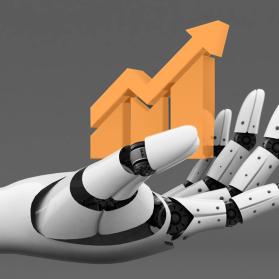Business Process Management is a success factor for competitiveness in companies of all industries. The effects of the Covid-19 pandemic on the global economy once again underline this relevance. But not only during, but also after the crisis, there are measures in place to ensure resilient, agile and at the same time crisis-proof business processes. In the future, this will enable companies to react faster, more efficiently and more purposefully to unforeseen events. Thus, the magic word of the current hour is resilience.
The impact of Covid-19 on business processes
The massive impact of this pandemic on business processes in companies can be summarized in three developments:
- Overloading of business processes, for example by shifting volumes from physical customer contact channels to digital channels,
- Restriction or failure of business processes, for example by breaking away from globally positioned value-added structures or short-time work,
- New or modified business processes, for example, by introducing new business model innovations or creating new virtual customer, supplier or partner channels.
Companies must deal with these new framework conditions and take appropriate measures to overcome the crisis. There will be no "back to normal" - but what will the "next normal" look like? The entrepreneurial function of Business Process Management (BPM) can make a valuable contribution to this.
Until now, there have been three main drivers for BPM: Improved Efficiency, Increased Automation, Enhanced Experience. With the consequences of Covid-19 for enterprises, we see a new target dimension: resilience or robustness. In order to be able to maintain or quickly restore business in crisis situations and thus remain efficient, companies must make their processes robust and sustainable. Approaches to process digitization and automation can create transparency, establish new processes and support overloaded or impaired processes. The requirement for resilience will therefore become established in Business Process Management.
Crisis Management through Business Process Management
BPM approaches can be used by companies in all industries to take a firm stand against the Covid-19 crisis. Basically, the focus should be set on two time perspectives:
- In the short term to ensure operational capability ("recovery" orientation)
- In the medium term, to optimize sustainable resilience
In the following, four concrete BPM solution options for crisis management are proposed, which can be applied in the short or medium term.
1. Recovery Measure "Crisis Process Monitoring Dashboard”
Monitoring dashboards can be set up through the introduction and application of process mining solutions. These allow particularly critical business processes along the value chain - for example in the supply chain or customer service - to be checked in real time on the basis of real data.
To do this, the critical business processes and relevant internal/external monitoring KPI's must first be identified. Subsequently, a suitable data model with corresponding dashboards and reports can be developed.
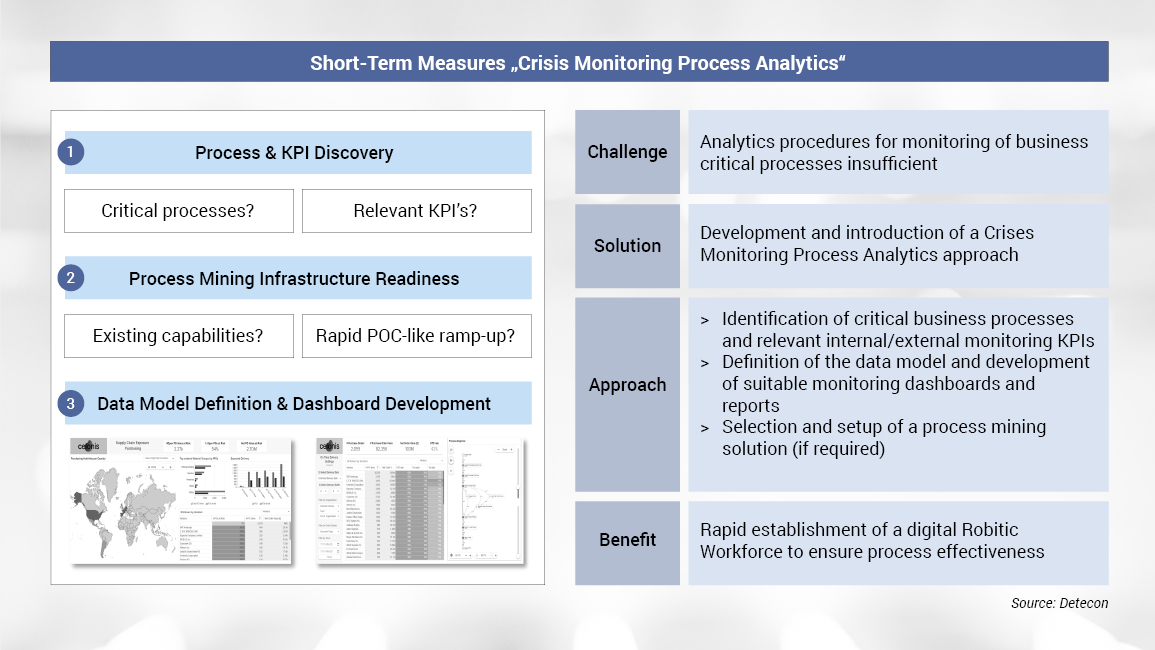
2. Resilience Measure "Process Resilience Assessment & Re-engineering”
A holistic audit of business-critical processes - for example through interviews, site visits, document review and/or the application of process mining - can be used to determine the resilience as well as new or changed process requirements using suitable methods. In a next step, suitable measures can be derived and implemented on this basis.
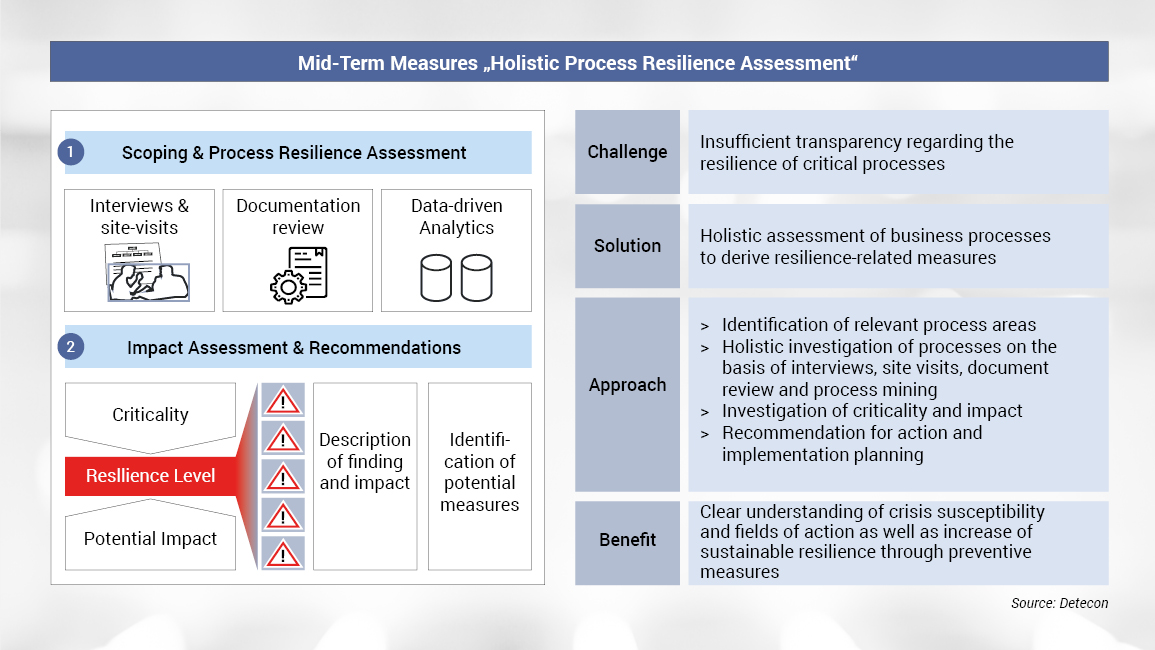
3. Recovery Measure "Rapid Robotic Workforce Deployment"
In the event of a sudden loss or constrain of employees due to short-time work or contact closure, an RPA-based workforce (Robotic Workforce Automation) can be deployed at short notice for business processes with corresponding automation potential and provide temporary compensation. For this purpose, critical processes and use cases that can be automated must first be identified. The identified use cases can then be prioritized and implemented according to their criticality.
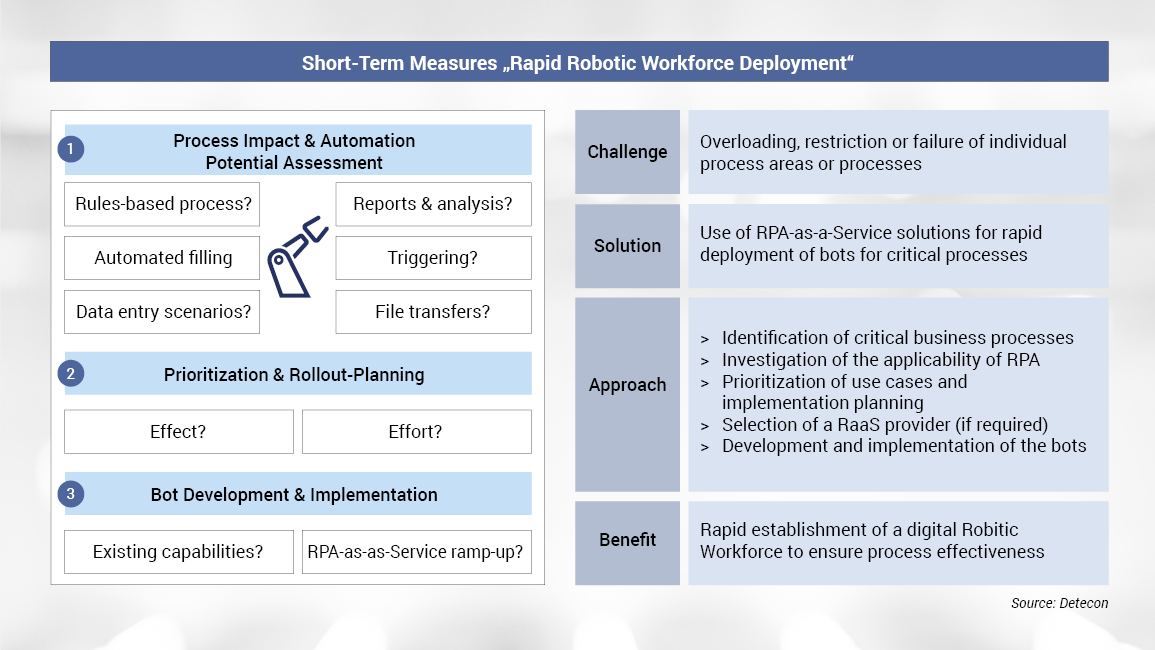
4. Resilience Measure "Robotic Workforce Integration"
To improve resilience, consideration should be given to the sustainable use of RPAs along all business-critical processes. First of all, a robotic workforce strategy would have to be developed with the involvement of relevant stakeholder areas, especially HR, IT, BR and the specialist departments, in order to create a basic understanding of the objectives and the strategic framework. The next steps will be the development of a holistic Target Operating Model for operational integration, as well as implementation planning and implementation.
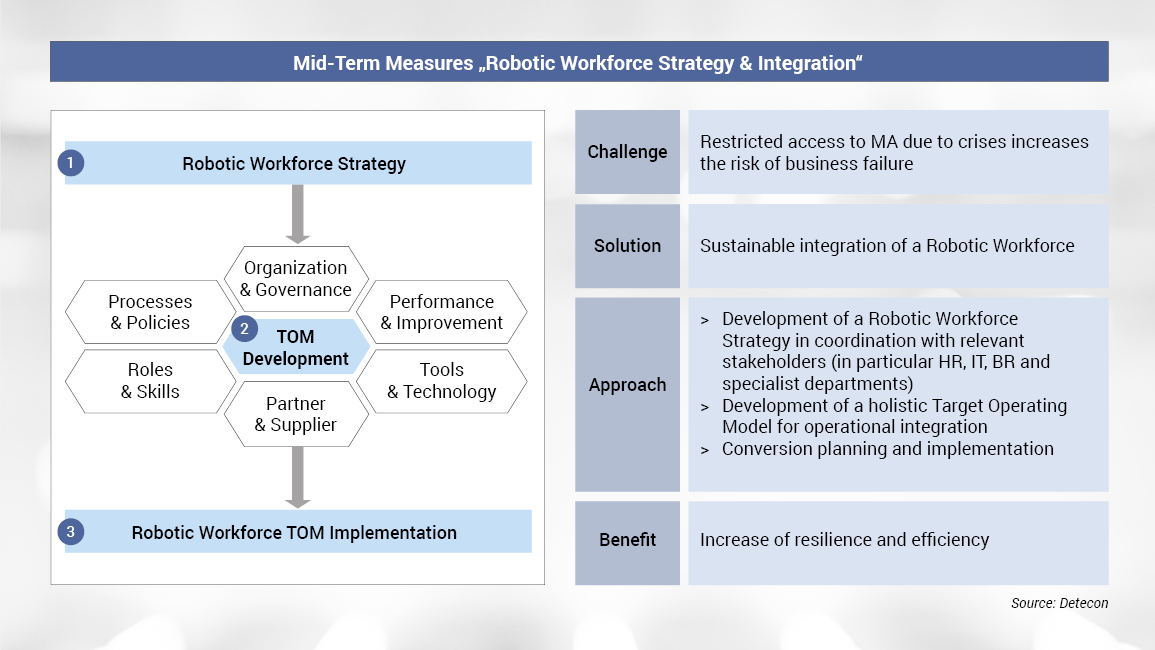
The proposed four measures are applicable to companies along all industries and sectors and their implementation complexity naturally depends on the existing BPM and digitization maturity of the organization. But even companies that are currently in the lower maturity level and do not yet have technologies such as process mining or RPA can avoid a lengthy implementation cycle and introduce the measures quickly by using appropriate "X-as-a-Managed Service" market solutions.
With these measures, BPM makes an enormous contribution to the resilience of companies. The "Next Normal" is forming!






